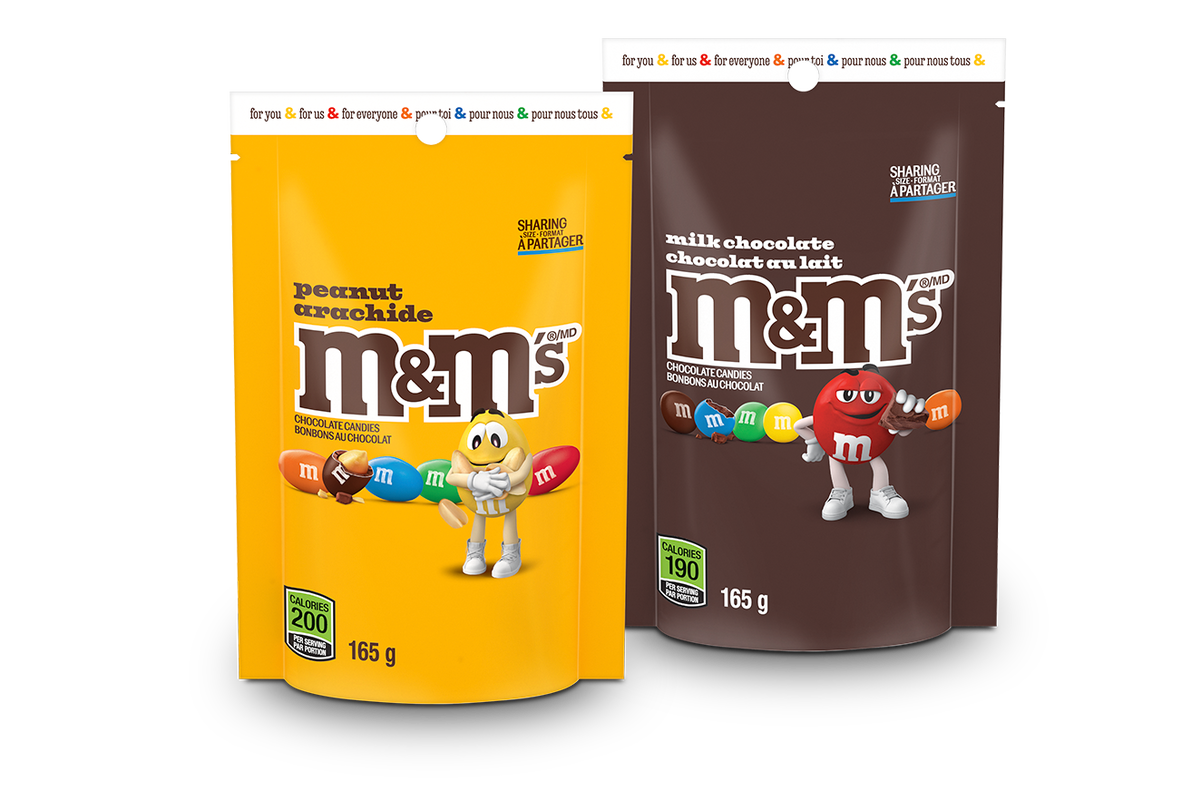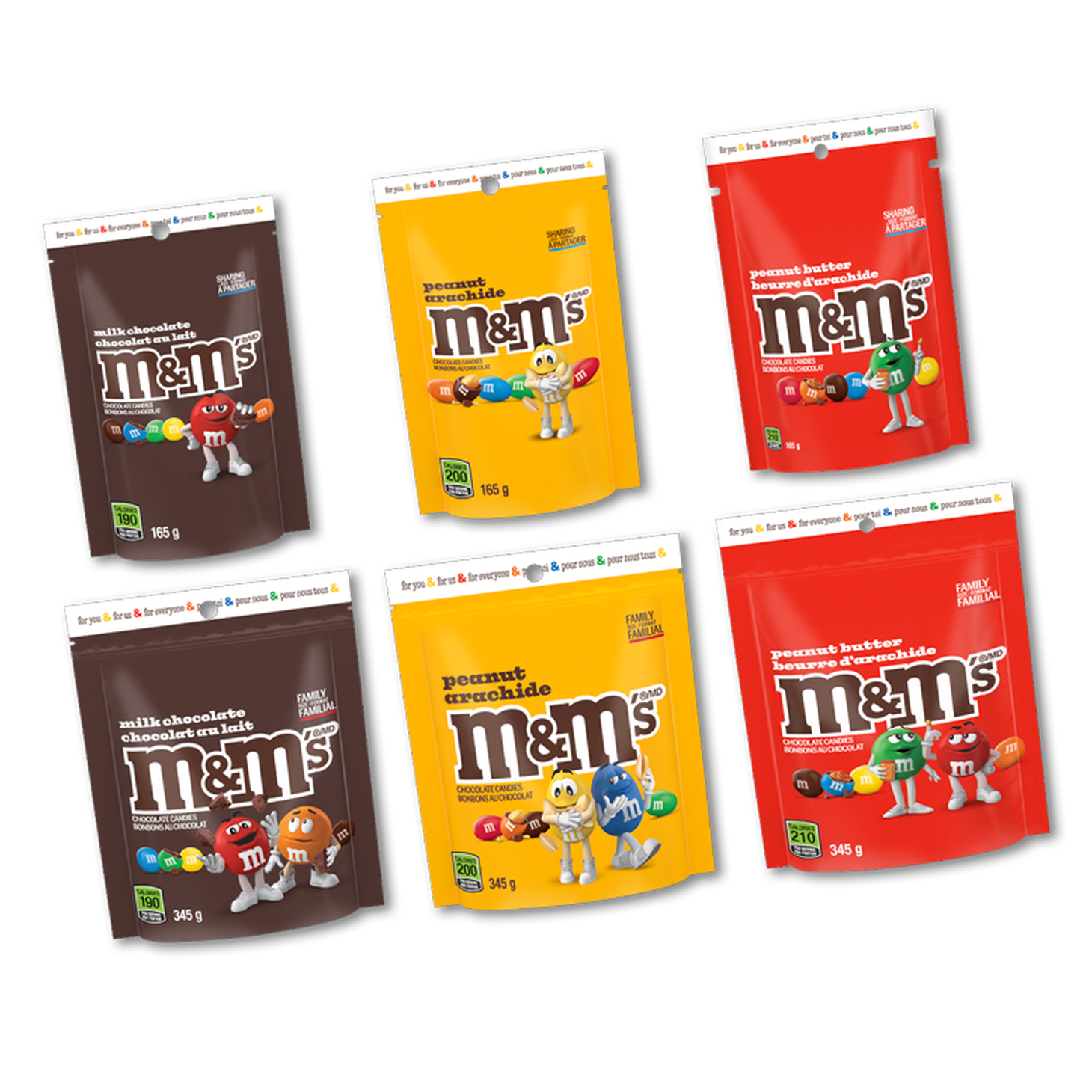M&M’S® designed for a greener future.
Improving packaging sustainability


what do we mean by that?
Many candy (and food) currently comes in multi-material packaging made of various layers of plastic. M&M'S has started using mono-material packaging made of a single type of plastic that's easier to recycle and meets the guidelines of the Association of Plastic Recyclers as well as rule #6 of the Canada Plastic Pact's Golden Design Rules regarding flexible plastics. Over the next few years, recycling programs will continue to evolve and may eventually include this type of packaging. But M&M'S is ready now - with products in packaging that Canadians can feel good about today.

your questions answered!

Mono-material is packaging that is composed of a single type of plastic (in this case polyethylene), which can be more easily recycled. Whereas multi-material packaging is composed of multiple layers of different types of plastic within one package. This new mono-material package design meets the guidelines of the Association of Plastic Recyclers and Canada Plastic Pact’s Golden Design Rules (specifically Golden Design Rule #6).
There are a number of polyethylene film recyclers in Canada who are seeking more mono-material feedstock. However, most plastic film packaging used for food is multi-material film. Because it is difficult for consumers to distinguish between recyclable and non-recyclable packages, most municipal recycling programs in Canada advise residents to put all plastic film packaging into the trash. As more brands transition from multi-material films to mono-material films, some recycling programs are making plans to start to collect mono-material films. Transitioning our portfolio of film packaging to mono-material is an important step needed to ensure more flexible packaging can be recycled in the near future.
At Mars Wrigley, we want to contribute to a circular economy where packaging material does not become waste, but is recycled, reused, or composted. To address this issue, we are investing hundreds of millions of dollars to reimagine and redesign our packaging with nearly half of our packaging portfolio undergoing redesign or elimination. Eliminating packaging waste today helps us build the world we want tomorrow.